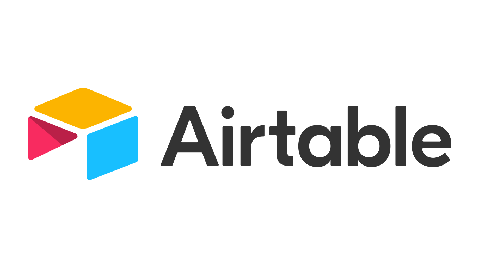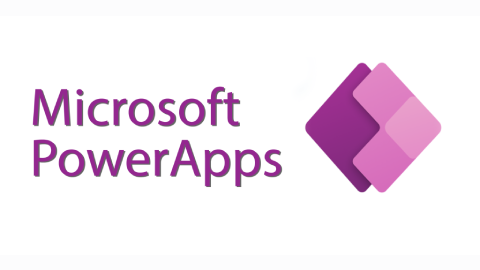Our website contains links to partner sites. If you click from our site to the partner's site and purchase their services there, we will receive a commission for mediation (Find out more information). This form of cooperation does not affect the objectivity of our reviews. With each purchase made through links from our site, you support our editorial office so that we can create quality and useful content in the future. Thank you.
Important notice All our articles are written by real people. They are not artificial texts from a machine.
Low-code and no-code development platforms

For decades, businesses had just two options for app development: acquire ready-made apps from a third-party vendor or create and personalize them from the beginning using professional coders and developers. However, things are changing drastically as we have seen the introduction of low-code and no-code development platforms.
These different app development approaches use a graphical interface to provide users the freedom and power to create apps and automate business operations without writing code line by line.
Introducing low-code and no-code tools offers increased user accessibility, encouraging innovation and minimizing stress within the IT department. Using low-code and no-code platforms makes application development accessible and easy for everyone.
What is Low-code?
With so much about low-code, it is crucial to understand what it represents. Low-code is a way of creating and building applications that eliminates the need for traditional code writing.
It uses intuitive graphical tools and integrated features to achieve this feat. Although writing pro-code remains a component of the development phase, low-code development provides a more enhanced and simplified experience that allows users to get started creating applications more rapidly.
What is no-code?
No-code is a strategy that provides a similar user experience to low-code but goes a step further by enabling people without technical knowledge to create applications without writing any code.

Difference between Low-code and No-code
The primary distinction between these two development platforms is the number of coding skills required by the user. Users of low-code development platforms must have some basic coding knowledge to create and integrate complicated programs, whereas no-code development platforms don’t require any coding knowledge.
Since a lot of organizations have several technical skills expertise among their employers, most platforms provide low-code and no-code tools.
Features of Low and No-code platforms
These features are aimed to make online and mobile development more readily available and typically include:
Intuitive interface
User interfaces can be efficiently designed with low-code/no-code tools, including drag-and-drop features that eliminate the need to write code. It allows users to quickly drag and drop components within the platform, providing a more seamless and efficient development.
Accessibility across all platforms
High-level system requirements are rarely needed when using no-code or low-code tools. They can be created and utilized on most devices since they are available on most devices having minimum operational requirements.
Analyzed Visually
Data and analytics are provided in visual models. Therefore, information is given visually so that most people can understand.
Scalability
Low-code applications can be swiftly extended and expanded to accommodate new business models. In a matter of days, new mobile applications may be designed and launched, or existing capabilities can be easily expanded to meet new business demands.
Full-fledged functionality is available.
Pre-built functionalities in no-code/low-code platforms sometimes avoid the need to create additional key modules for programs from scratch.
Advantages of Low-code and No-code platforms
Low-code development tools have numerous advantages and allow more individuals to participate in the application development processes. These platforms are also helpful to enterprises in increasing their responsiveness. It makes the application process less complicated. Let’s explore some benefits of these development platforms.
- Increased performance: No-code platforms enable you to create more apps in less time. You can develop applications in a few days, if not hours because you don’t have to write huge lines of code. In addition, it has several features that automate tasks.
- Lower cost: It allows you to develop applications quickly without spending much. You do this by not hiring more developers since the platform offers different development tools.
- Business versatility: These platforms enable you to design flexible apps on several platforms and devices. Furthermore, users can obtain and use data irrespective of where they are.
- Effective governance: Restrictions evolve regularly, making it difficult for businesses to stay current. Low-code platforms enable you to meet and comply with these rules to remain risk-free.
Who can use low-code and no-code app builder?
Low-code development tools enable professionals and developers, whereas no-code development tools are simple. With the support of full-stack visual programming offered by low-code platforms, professional developers may scale up current solutions and speed development, and communicate more readily with non-technical team members.
Developers will benefit from low-code and no-code tools. Developers are business executives such as administrative workers, sales teams, financial analysts, and managers who need to master important technologies to improve their performance without programming language experience.
Instead of hiring software developers in short supply, they can use low-code tools list to create apps and products that boost their efficiency. The strain on developers increases when more business professionals are trained to perform IT tasks, allowing them to concentrate on heavier tasks.
Top Low and No-code Development Platforms
Several low-code and no-code tools are available nowadays, with many more being developed. These tools can serve several purposes, including data visualization, automation, production creation, and web design. Today, the number of low and no-code development platforms is increasing rapidly because of its unique functionality. The following are some of the most popular low-code and no-code platforms:
Airtable

Airtable combined databases and spreadsheets before simplifying the process. Users may collaborate with data, analyze it, and manage it with Airtable without having to write code or any formula. The platform makes it easier to automate workflows, collaborate more effectively, and increase productivity. Furthermore, users can perform several tasks, including event planning, content calendars, project management, and campaign management.
Zapier

Zapier is a tool that integrates apps, automates workflows, and speeds up project completion. Businesses have grown overwhelmed by the number of apps they use due to a whole array of apps sprouting in the tech industry. With automation and synchronization, Zapier makes integrating and managing all of these apps more accessible.
Bubble

Bubble no code enables people to create Minimum Viable Products (MVPs) and applications without understanding any programming languages. Users can develop functional applications using its drag-and-drop features without writing any code. This application ranges from Customer relationship management to Software as a Service tool.
Reloadly

With just a few lines of code, Reloadly allows organizations to generate a wide selection of digital products and services connected to apps in the financial and telecom industries. Businesses can develop new sources of revenue in a matter of hours using Reloadly without needing to sign a long-term contract. In addition, users can use Reloadly to add new deals to their website, mobile apps, and social media profiles.
Microsoft Power Apps

You can easily create and share applications without stress using Microsoft Power Apps. The application allows you to rapidly create apps that address problems and improve processes to increase business agility.
They offer pre-built designs and drag-and-drop tools to help you quickly begin designing apps. Therefore, you may jump directly into deployment and make rapid improvements.
Conclusion
These technologies undeniably transform businesses and provide them with the competitive advantage required to satisfy today’s market demands. However, like any other business transformation, adopting citizen-user solutions requires a strong desire to change administration and communication and disintegrate bottlenecks.
Now-code and low-code solutions are increasingly facilitating rapid development and innovation of applications. Businesses – large and small- want a tool that will enable them to build applications quickly and cost-effectively. Low-code and no-code tools list will swiftly get businesses where they want to go, whether it’s automating workflow procedures or integrating new company offers.




